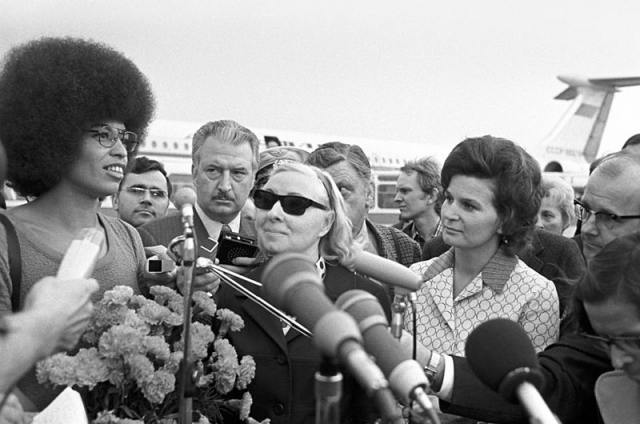The Making of a State-Sponsored Heroine: Angela Davis, African Americans, and the Promise of the Soviet Union
History journal blog

Want to learn more about the connections between African Americans and the Soviet Union? Read this blog post by Andrew Jacobs introducing his recent article ‘The Making of a State-Sponsored Heroine: Angela Davis, African Americans and the Promise of the Soviet Union’.
Angela Davis has been in the spotlight for more than 50 years. Yet, today she seems as notable as she has ever been. The themes of many of her recent lectures and writings – prisons, Palestine, and social justice – have attracted a robust following and generated controversy as well.
Now known as a professor and a human rights activist, in the 1970s Davis was famous for other reasons. She was then the most famous Communist from the United States. Some five decades ago her trials and travails garnered front page headlines. Her life in the early 1970s played out like something from a movie: a courthouse shooting, a manhunt, a murder trial, and a subsequent acquittal. Her widely publicized incarceration and trial spurred a worldwide solidarity campaign that grew particularly strong in the Communist world. “Free Angela Davis!,” was a slogan repeated in many languages throughout the world. In the process, for a variety of reasons, she became a state-sponsored heroine in the Soviet Union. Praised for her bravery for standing up to reactionary American forces and adored for her commitment to communism, she was an American the Soviet people were supposed to admire.
This article charts her Soviet experience, comparing her Soviet fame and her 1972 visit to the country as a guest of honor with the Soviet experiences of other African American visitors, including Muhammad Ali. It outlines her popularity in the Soviet Union and how she became such a popular and even glamorized figure in the country. Both retrospectively and contemporaneously critics described the Soviet Union of the 1970s as stagnant and gray. It was a country that no longer seemed to attract the hearts and minds of western visitors as it had during the 1920s and 1930s. This article, by contrast, tells a largely untold story of how some African Americans saw in the Soviet Union during this apparently “stagnant” period, visions of racial harmony and a successful multicultural society that they wished existed back home.

